

 |
Engineering |  |
|
Temperature The instrumental performance, which was driven by the scientific objectives of the experiment, placed a number of requirements on the thermal design of CDS, namely:
Front Bulkhead / Optical Bench / Bulkhead 3 Data for the last 20 days: The large deviations from the normal are due either to processor resets, which reduce the heater power to the instrument - Recovery normally takes a few hours, or to closure of the doors during station keeping manouvers 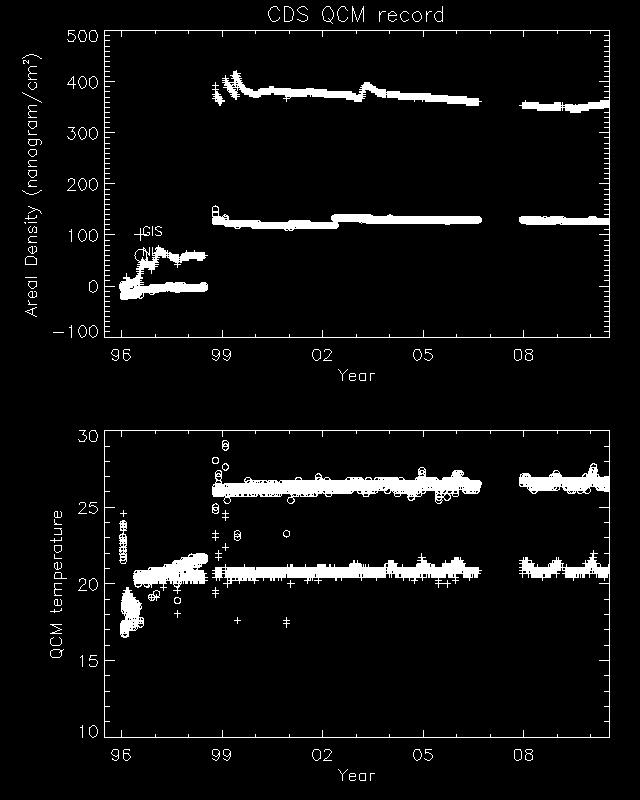 Data since launch: The high temperatures after launch were during the bakeout period. The early fluctations in the Optical Bench Group were arrested by increasing the temperature from 20 deg to 23 deg. A six month periodicity may be apparent in some groups of temperatures. This is due to the spacecrafts 6 month elliptical orbit moving it 600,00km closer to the sun 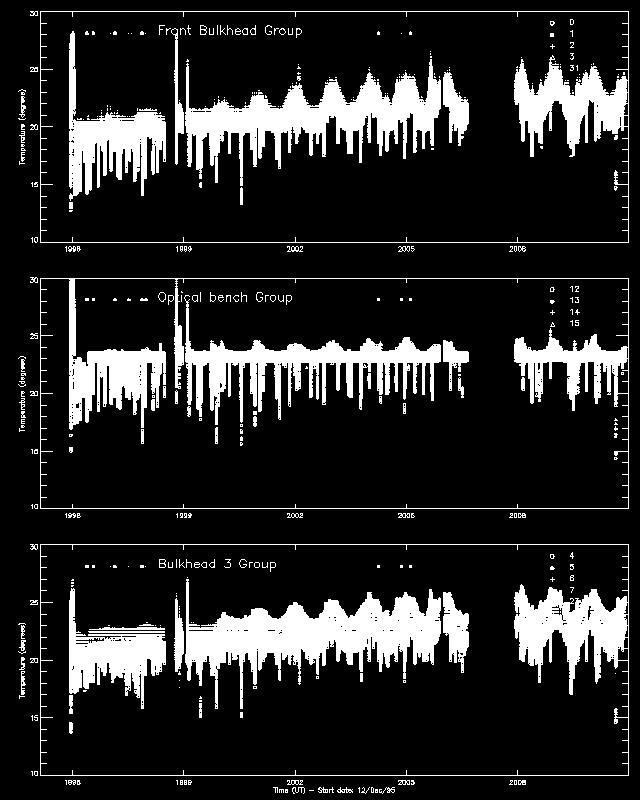 Bulkhead 4 / Mechanisms Group / Actuators Data for the last 20 days: The deviations shown in the mechanism and actuators groups are due to the normal movement of these systems during science studies.  Data since launch: The high temperatures after launch were during the bakeout period. A six month periodicity may be apparent in some groups of temperatures. This is due to the spacecrafts 6 month elliptical orbit moving it 600,00km closer to the sun 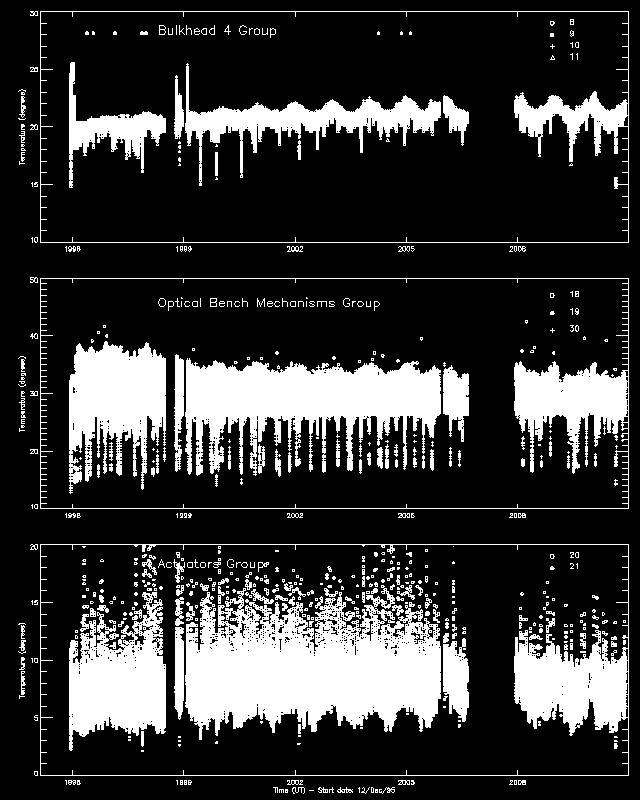 Electronics Units / Thermal Stops / Assorted Data for the last 20 days: The large deviations from the normal are due either to processor resets, which reduce the heater power to the instrument - Recovery normally takes a few hours, or to closure of the doors during station keeping manouvers. The deviations in the thermal stops graph are caused by programed changes in the pointing of the instrument, which increase or decrease the power of sunlight falling on the stops. 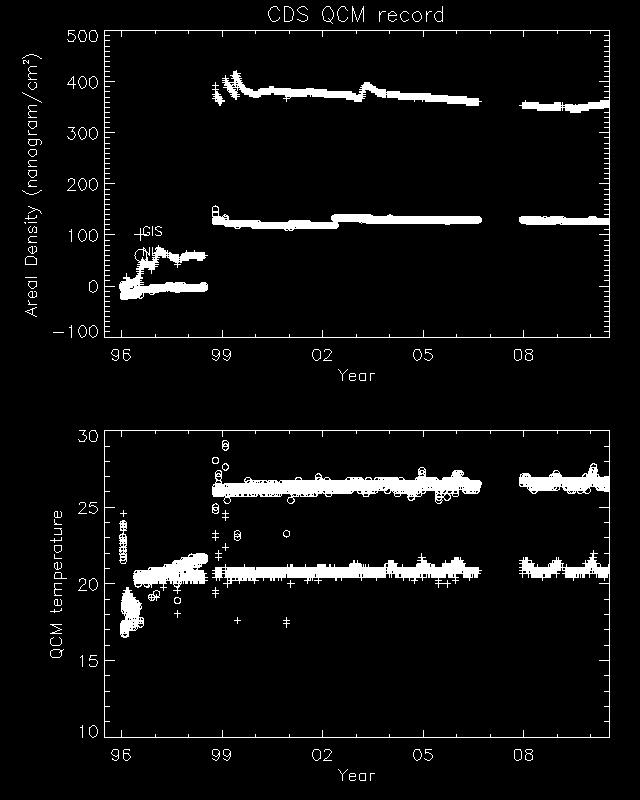 Data since launch: The high temperatures after launch were during the bakeout period. A six month periodicity may be apparent in some groups of temperatures. This is due to the spacecrafts 6 month elliptical orbit moving it 600,00km closer to the sun 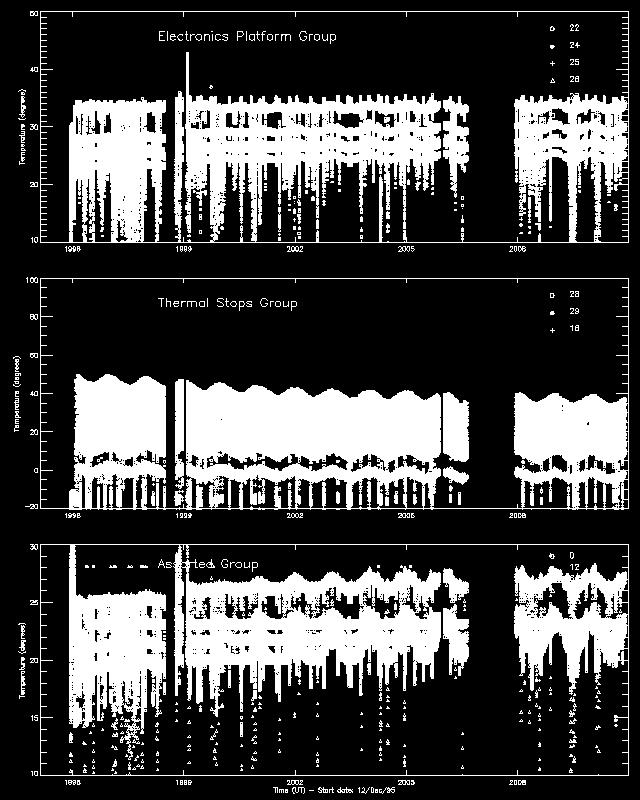 From the CDS Operations Management Team in the Space Science & Technology Department at CCLRC Rutherford Appleton Laboratory Site maintained by John Rainnie. Last revised on Thursday (24/Apr/2008) at 15:50. |